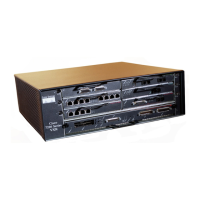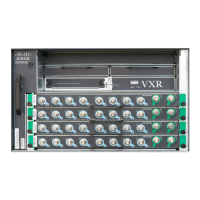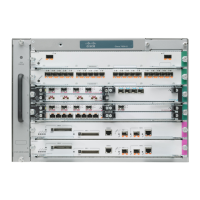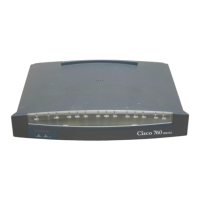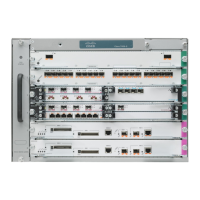Send document comments to nexus7k-docfeedback@cisco.com
7-28
Cisco Nexus 7000 Series NX-OS Interfaces Configuration Guide, Release 5.x
OL-23435-03
Chapter 7 Configuring vPCs
Information About vPCs
Restore on Reload
Note Beginning with Cisco NX-OS Release 5.2(1), the reload restore command and method is deprecated.
We recommend that you use the auto-recovery command and method.
Beginning with Cisco NX-OS Release 5.0(2), you can configure the Cisco Nexus 7000 Series device to
restore vPC services when its peer fails to come online by using the reload restore command. You must
save this setting in the startup configuration. On reload, the Cisco NX-OS software starts a
user-configurable timer (the default is 240 seconds). If the peer link port comes up physically or if the
peer-keepalive is functional, the timer is stopped and the device waits for the peer adjacency to form.
If at timer expiration no peer-keepalive or peer link up packets were received, the Cisco NX-OS software
assumes the primary STP role and the primary LACP role. The software reinitializes the vPCs, bringing
up its local ports. Because there are no peers, the consistency check is bypassed for the local vPC ports.
The device elects itself to be STP primary regardless of its role priority, and also acts as the master for
LACP port roles.
Autorecovery
Beginning with Cisco NX-OS Release 5.2(1), you can configure the Cisco Nexus 7000 Series device to
restore vPC services when its peer fails to come online by using the auto-recovery command. You must
save this setting in the startup configuration. On reload, if the peer link is down and three consecutive
peer-keepalive messages are lost, the secondary device assumes the primary STP role and the primary
LACP role. The software reinitializes the vPCs, bringing up its local ports. Because there are no peers,
the consistency check is bypassed for the local vPC ports. The device elects itself to be STP primary
regardless of its role priority and also acts as the master for LACP port roles.
vPC Peer Roles After Recovery
When the other peer device completes its reload and adjacency forms, the following process occurs:
1. The first vPC peer maintains its current role to avoid any transition reset to other protocols. The peer
accepts the other available role.
2. When an adjacency forms, consistency checks are performed and appropriate actions are taken.
High Availability
During an In-Service Software Upgrade (ISSU), the software reload process on the first vPC device
locks its vPC peer device using CFS messaging over the vPC communications channel. Only one device
at a time is upgraded. When the first device has completed its upgrade, it unlocks its peer device. The
second device then performs the upgrade process, locking the first device as it does so. During the
upgrade, the two vPC devices will temporarily be running different releases of Cisco NX-OS, however
the system functions correctly because of its backward compatibility support.
Note See the Cisco Nexus 7000 Series NX-OS High Availability and Redundancy Guide, Release 5.x, for
complete information on high-availability features.
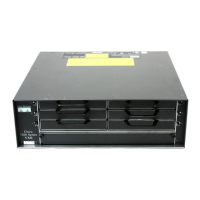
